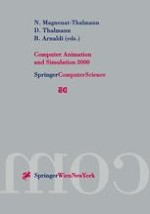This volume contains the research papers presented at the Eleventh Eurographics Workshop on Computer Animation and Simulation which took place in Interlaken, Switzerland, August 21-22, 2000. The workshop is an international forum for research in human animation, physically-based modeling, motion control, animation systems, and other key aspects of animation and simulation. The call for papers required submission of the full papers for review, and each paper was reviewed by at least 3 members of the international program committee and additional reviewers. Based on the reviews, 14 papers were accepted and the authors were invited to submit a final version for the workshop. We wish to especially thank all reviewers for their time and effort in working within the rigid constraints of the tight schedule, thereby making it possible to publish this volume in time for the workshop. We also thank the authors for their contributions to the workshop, without whom this unique forum for animation and simulation work would not exist. We are grateful to the Eurographics Association and especially to Werner Purgathofer from the Technical University of Vienna, for his support in publishing the workshop as a volume of the Springer-Verlag Eurographics Series. We also thank the Eurographics '2000 organisers, especially David Duce, and Heinrich Miiller from the EG board. We are also very grateful to lerrin Celebi for the organization of the review process and and Josiane Bottarelli for the registration process.
